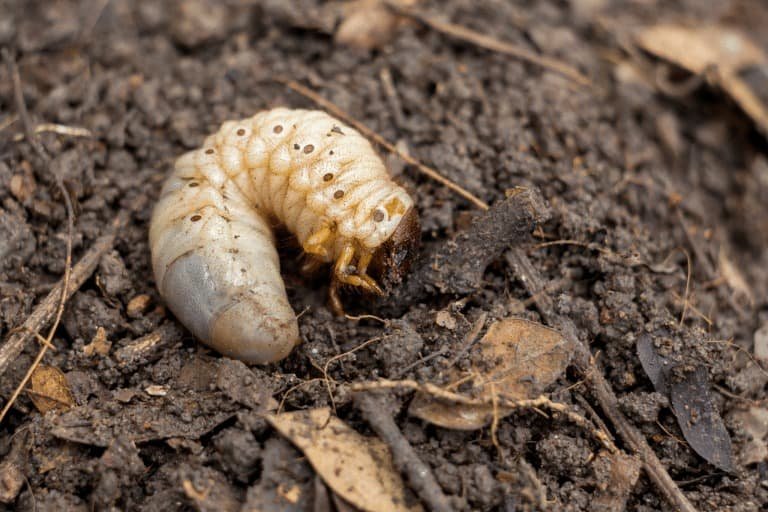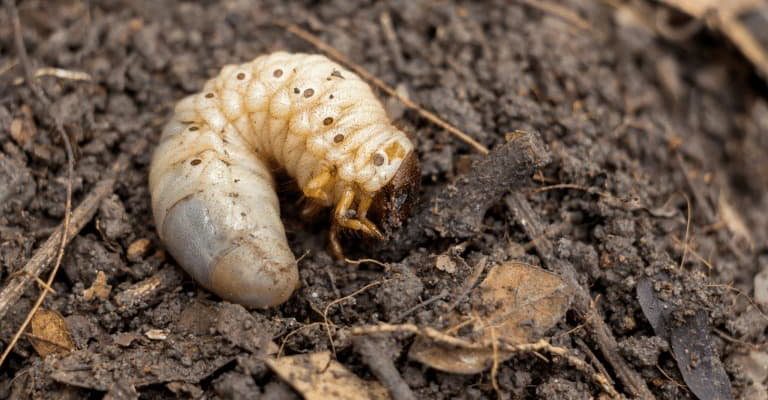
Imagine your lawn is like a living organism. Just like how our bodies have their share of good and bad bacteria, lawns have beneficial and harmful critters, too. Grub worms, for instance, are the larvae of certain beetles and can indeed damage your grass if they get out of hand. Then there’s the lawn roller that some people swear by for achieving that perfectly manicured look. But is it all it’s cracked up to be? Let me explain, and we’ll separate the facts from the fiction.
What Are Grub Worms, Anyway?
Grub worms are the larvae of beetles, mostly the Japanese beetle or the European chafer. They live underground, munching away at grassroots, which can lead to brown patches in your lawn. If you’ve ever seen a section of grass that feels spongy underfoot or is easily pulled up, you might be dealing with grubs. But don’t panic just yet!
Here’s the thing: not all grubs are bad. Some species can actually help aerate the soil by breaking it down while they feast. However, when they multiply in large numbers, they can wreak havoc. Think of them as the party crashers of your lawn—they might be okay in small doses, but too many can spoil the fun.
Signs Your Lawn Has Grub Worms
So, how do you know if grubs are your lawn’s uninvited guests? Here are a few signs to keep an eye out for:
- Brown patches: This is the most common indicator. If your grass is brown and dry, but the soil is moist, grubs are likely munching beneath the surface.
- Spongy texture: When you walk on affected areas, they feel soft or spongy, indicating that the roots are damaged.
- Bird activity: If you see birds, particularly crows or starlings, spending a lot of time in your yard, they might be digging for grubs.
Identifying these symptoms early is crucial. If you find grubs, you can take action before they do severe damage.
Debunking the Grub Worm Myths
There are plenty of myths floating around about grub worms that can lead you astray. One common misconception is that all grubs are harmful. This is simply not true. As I mentioned, some grubs can actually play beneficial roles in your garden ecosystem. Additionally, not all lawns with grubs automatically need chemical treatment.
Another myth? That grubs only appear in late summer. While this is a prime time for them, they can hatch earlier, too. Depending on your region, you might spot grubs as early as spring.
Lastly, many people think that a good fertilization schedule will prevent grubs. While healthy grass does have a better chance of surviving grub infestations, it won’t totally shield your lawn from damage if grubs take hold.
Lawn Rollers: The Secret to Perfect Grass?
Now, let’s roll into the topic of lawn rollers. You might think that rolling your lawn will give it that pristine golf-course appearance. But hold on! You might be wondering whether this tool is really necessary or if it’s more hype than help.
A lawn roller can help smooth out uneven surfaces and pack down new sod or seed. Think of it like a cookie cutter for your yard, shaping it into something lovely. However, rolling your lawn isn’t a one-size-fits-all solution. It can compact the soil too much, causing issues with drainage and root growth. You wouldn’t want to make your lawn feel cramped, right?
When Should You Use a Lawn Roller?
If you decide to use a lawn roller, timing is crucial. Here are the best scenarios for using one:
- After seeding: If you’ve just planted grass seeds, rolling can help seed-to-soil contact, improving germination.
- When laying sod: Rolling helps eliminate air pockets and ensures sod makes good contact with the soil.
- Following aeration: If you’ve aerated your lawn, rolling can help the soil settle and improve nutrient absorption.
Just remember: moderation is key. Over-rolling can lead to compacted soil, stunted growth, and drainage problems.
Common Misconceptions About Lawn Rollers
Just like with grubs, lawn rollers come with their share of myths. One big misunderstanding is that rolling makes your lawn look greener or healthier. In reality, it won’t change the color or health of your grass; it’s merely about aesthetics and surface smoothness.
Another myth is that all lawns need to be rolled regularly to stay healthy. This isn’t true! Most lawns – especially established ones – don’t need this treatment more than once a year, if at all, unless you’re dealing with significant surface issues.
Combining Strategies for a Healthy Lawn
To really tackle issues with your lawn, think of it as a team effort. You don’t have to focus on just grubs or just rollers. Here are some strategies you can combine:
- Regular inspections: Check for grubs, pests, and general health a few times a season. Catching problems early can save a lot of stress.
- Proper watering: Don’t just water when the grass looks dry; understand your lawn’s specific needs and adjust accordingly.
- Soil testing: This will tell you what nutrients your lawn needs, which can help you succeed without resorting to pesticides.
Combining these strategies can lead to a thriving lawn, free from the chaos of myths and misinformation.
Wrapping It All Up
In this quest to decipher the truth about grub worms and lawn rollers, we’ve uncovered some critical insights. Grub worms can be both beneficial and harmful, and knowing when to act can save your lawn from serious damage. On the flip side, lawn rollers can smooth things out but aren’t a magical fix-all. You have to use them wisely to avoid compacting your soil.
So, the next time someone mentions grubs or rollers, you’ll be armed with the facts and the confidence to make informed decisions. Your lawn deserves the best care you can provide, and understanding these concepts puts you well on your way to achieving that picture-perfect yard. Happy gardening!

